*This post may have affiliate links, which means I may receive commissions if you choose to purchase through links I provide (at no extra cost to you). As an Amazon Associate, I earn from qualifying purchases. Please read my disclaimer for additional details.
No house is complete without power. You need electricity to power your appliances, so you will most likely install power outlets in weird places in your home.
What if you have electronics or appliances outside? How do you weatherproof outdoor power outlets?
Read this article for nine ways to weatherproof outdoor power outlets.
Table of Contents
1. Install the Right Outlet

The first thing you must do is to install the right power outlet. Make sure that you confirm from the store that the outlet that you are buying (if it is not installed already) is safe to be used outside.
If you are hiring a professional to install the outlet for you, they will surely know the best outlet to use outside.
2. Install Bubble Covers

Bubble covers are not just beautiful, but they also help your power outlets last longer because they prevent rain from reaching the outlets.
The covers come in different sizes, so you want one that can properly seal the outlet and will not allow a single drop of rain to reach the outlet.
Bubble covers also come in different colors, so you want to get one that matches the color of the power outlet or the wall outside.
3. Install GFCI Protection
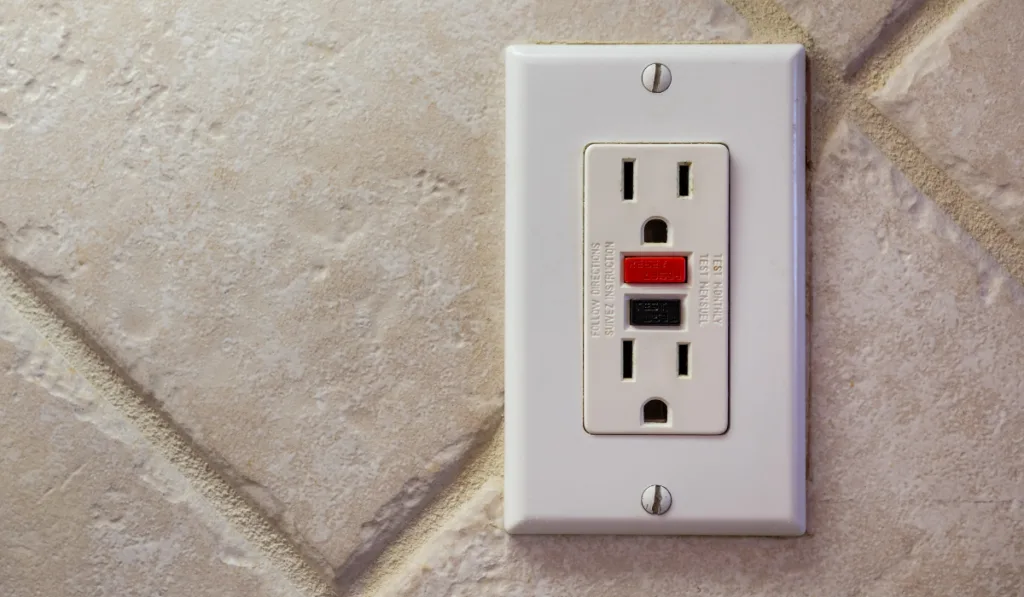
A ground fault circuit interrupter (GFCI) helps keep you and your family safe. Make sure you install a GFCI even if you don’t have outdoor power outlets. This protection is also very important for kitchen and bathroom power outlets, just like the ones outside.
The purpose of a GFCI is to disrupt the power supply to any power outlet that has developed a fault and might shock people. As soon as the system notices that a power outlet can shock people, it cuts off the power supply.
4. Seal the Wall Connection
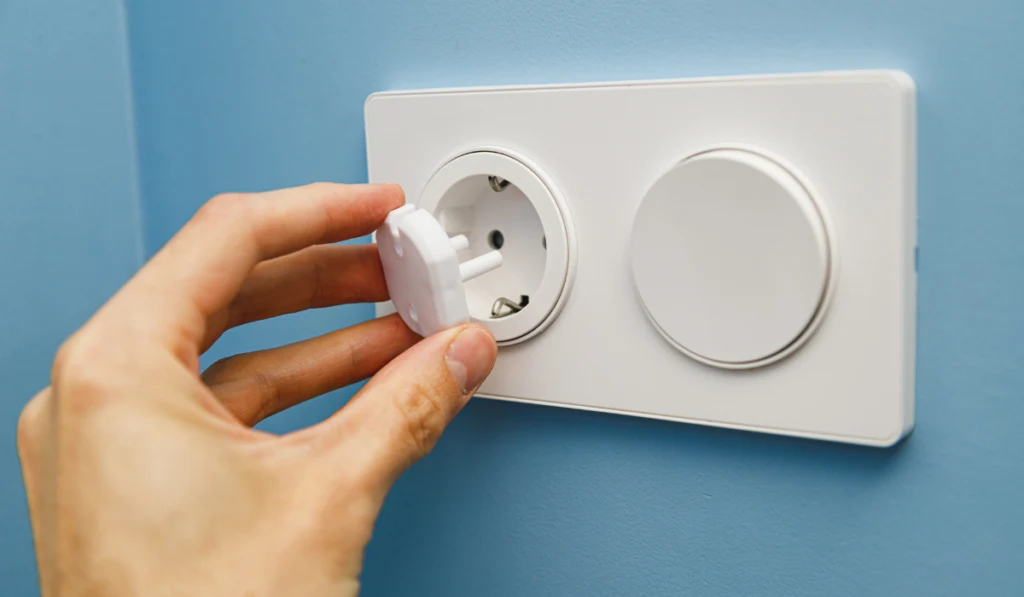
Sealing the power outlet to the wall is super easy. Just make sure that you seal it with a gasket and use a cover plate. Never expose the wiring behind the outlet.
If you can see the wire, it means that there is a high chance of rain reaching it. Also, make sure you can easily cover the sockets when nothing is plugged in.
5. Protect Your Outdoor Appliances from Storms
You installed the power outlet outside because of your outdoor appliances. Are these appliances safe where they are?
If water will cause them to malfunction, you should make sure that the rain does not touch them. You can keep them in a shed or your garage.
Make sure you seal any exposed part of the cord of the appliance with tape.
6. Use Only Grounded Extension Cords Outside
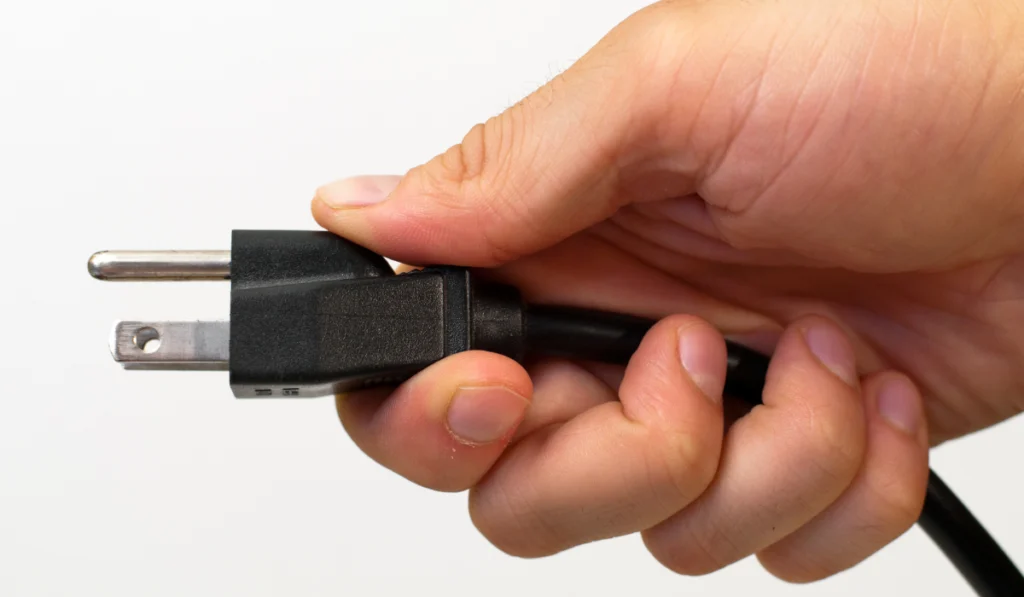
You can plug extension cords into the outdoor power outlet, just make sure that they are fused or grounded. This can help the extension box cut its power supply when there is a fault, and it will keep the shock from reaching the power outlet.
The outlet is outside, so the extension cord will also (likely) be outside. This means that you need to protect the cord and box from rain. You can do so by taking them inside when you are done with them.
7. Perform Regular Checks and Maintenance
Whether you are skilled or not, you can perform safety checks so long as you always think about your safety. Just observe the outlets and check for faults.
Are the outlets shaky? Is there any sign of rust? Check for anything weird and then call an electrician if you see any cause for concern.
Do not perform these checks or maintenance when it is raining. Also, try to cut the power supply first so that you do not get shocked while inspecting your outlets.
8. Cover Any Outlet That You No Longer Use
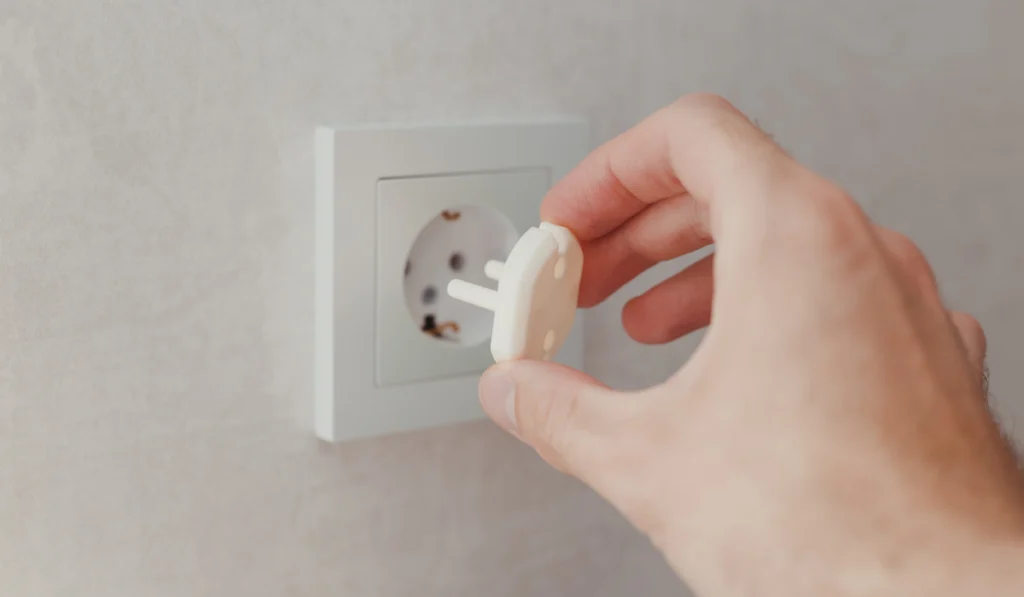
Instead of leaving a power outlet exposed, you should cover or block it by using a cover plate or anything that can seal it off completely. When you are ready to use it again, you can open it once more.
9. Consult a Professional

While you can install power outlets by yourself, please consult a professional, especially if you get stuck while doing it or if the outlets that you installed begin to malfunction. Professionals will know what to do, as well as give you useful advice that can keep you and your family safe.
Remember that these outlets are outside, so you need to be extra cautious.
Continue reading for some essential safety tips.
Some Safety Tips to Use Outdoor Outlets with Care
Here are some extra safety tips that can save you and everyone in your home:
1. Turn Off the Power Outlet and Appliances When Away
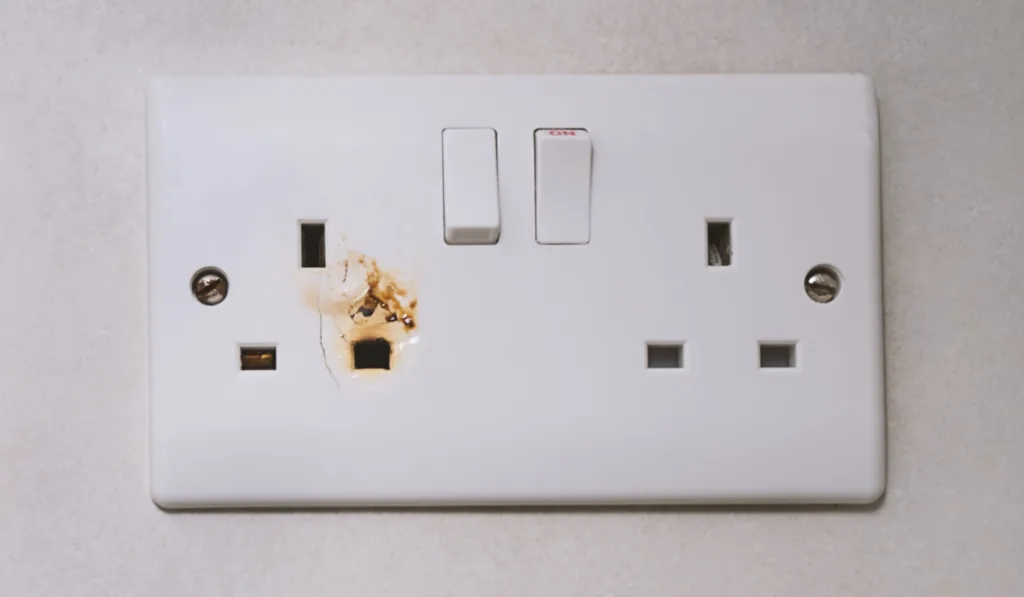
Do not forget to turn off the power supply when stepping out. This does not only save you a lot of money, but it also helps to keep you safe.
There are some essential power outlets, such as those connected to the refrigerator, that should remain switched on. However, endeavor to turn off the others.
You must do this, especially in the fall and other times of the year with storms. Try to teach your children to turn off the power supply before leaving the house, so that you do not need to remind them to turn it off regularly.
2. Do Not Check or Perform Maintenance on Power Outlets While It’s Raining
Remember that water conducts electricity, so you do not want to handle any electrical outlet outside when it is raining. It is not safe, and you can get shocked in the process if you decide to handle the outlets under a storm.
If you see the need to do so (and you simply cannot wait), turn off the entire power supply in your home and wear flip-flops before going out. Also, make sure that your home is properly grounded in case of lightning.
3. Do Not Overload the Outlets

You should make sure that you know the carrying capacity of your power outlets. Do not plug in appliances that require more power than the outlet can handle.
If you see the need to upgrade the outlets, perhaps because you want to make use of a larger appliance, do so first before you plug in the appliances.
This is also applicable to extension cords. Even though you are using an extension cord, make sure that the required power of every device plugged into it is not more than what the outlet can handle. The fuse of the extension box will blow up if you plug in more than the cord can manage.
Remember to stay safe, as electricity is not something that you should mess with.
Conclusion
It is very possible to make use of power outlets outside. You just need to weatherproof them so that they can keep working after a storm.
Remember to think about your safety and that of your family first when handling power outlets and appliances, especially those outside.
Resources
- https://www.upstateelectric.com/technical_articles.php?article=108&title=How-to-Protect-Outdoor-Outlets-From-Rain
- https://mrelectric.com/blog/how-to-protect-outdoor-outlets
- https://www.davidgrayonline.com/blog/electrical-wiring-to-watch-for-in-an-older-home-tips-for-keeping-your-outdoor-electrical-box-waterproof/
- https://www.lonlockwoodelectric.com/blog/weatherproof-outdoor-electrical-outlets/
